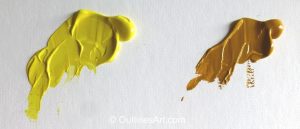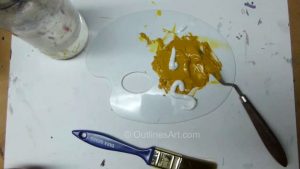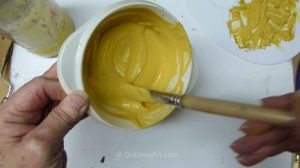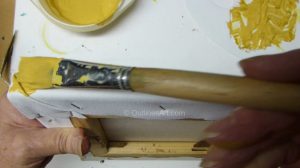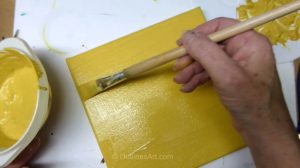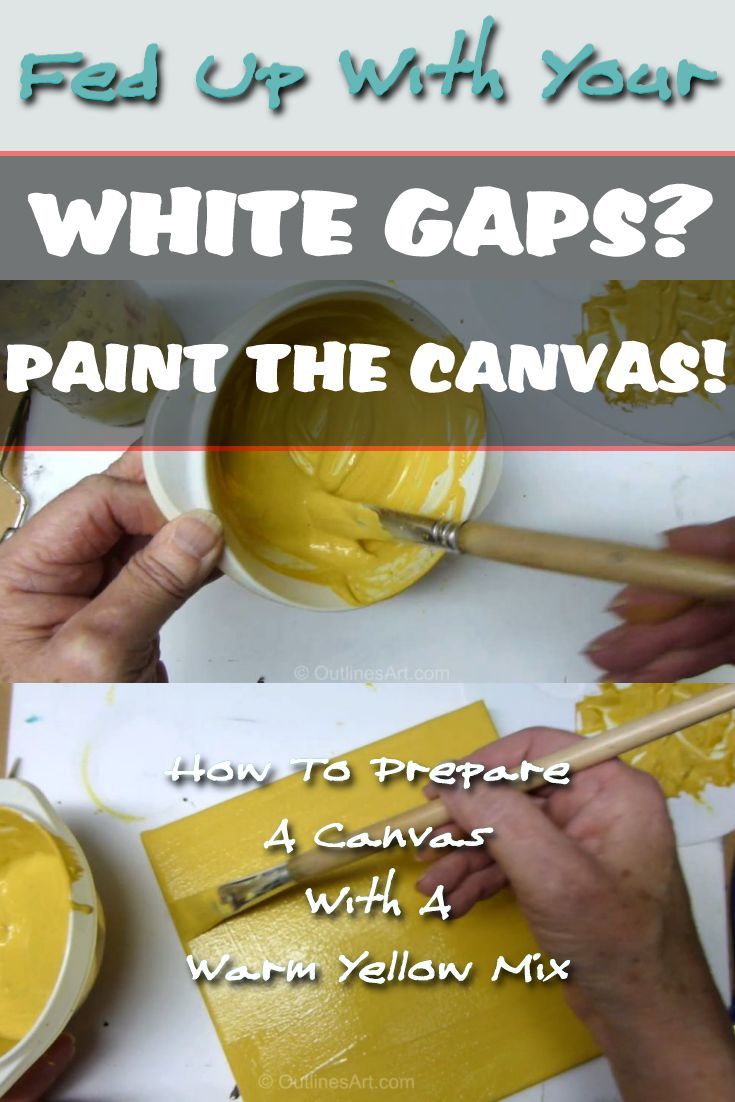A Warm Yellow Ground For Painting
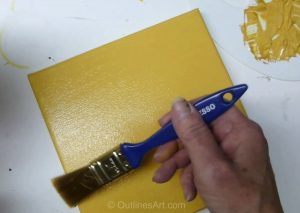 This Tutorial discusses how to prepare a canvas with a warm yellow mix to use it as a ground for a painting. Using Acrylic paint, we show how thick the paint should be and Why a colour ground is useful when painting a picture.
This Tutorial discusses how to prepare a canvas with a warm yellow mix to use it as a ground for a painting. Using Acrylic paint, we show how thick the paint should be and Why a colour ground is useful when painting a picture.
Easy for Beginners.
Some artists like to plan their paintings, but sometimes they just want to jump in and start painting. But what if it’s some time since you painted anything or you have never painted before?
When you’re a little out of the habit, it’s useful to handle some paint and get a feel for it again. If you paint regularly it’s good to have some canvases ready for use, and a coloured ground gives you a head start.
Table of Contents
About this Tutorial
Why painting a ground is good
Video
Mixing the Paint
Painting the canvas
When to use a Warm Yellow Ground
Avoid White Gaps Sharable Graphic
Why painting a ground is good
Painting a ground is a useful first step for beginners as both of those points apply. You will get a feel for the texture of acrylic paints and how it behaves and the colour will show through any gaps, giving the painting a finished look.
- A ground can give depth to transparent colours and serve to give harmony all over a picture when it shows through in places.
- If you have ever balked at the sight of a glaring white canvas, painting a coloured ground will help to remove that feeling.
- You can prepare several canvasses in advance for a series of paintings, so that they have some unity throughout the series.
- Some new canvasses have flaws or substances that resist paint. This prevents paint from adhering properly or interrupts the flow. A ground fixes the problem.
- You can use a coloured acrylic ground as an under painting for oils.
Full written details are below the video.
Video Showing mixing and applying the paint
Mixing the Paint
Colours in this mix are:
Yellow Ochre – Lemon Yellow – Titanium White
Yellow ochre can be used on its own, but I like to experiment with mixes.
I chose to mix it with a little lemon yellow to brighten it and white to make a lighter colour. You may prefer to mix with different colors e.g. cadmium yellow, cadmium red.
Mix the colours first until you have the colour you want.
I used a palette knife to mix it separately so that I could choose how much to use for the canvas,
This approach allowed me to continue to mix more colors for other canvasses.
Notice I have very little water in my jar.
Water should be added very slowly, a few drops at a time to get the right consistency.
If it is too wet the coating will be too thin and could make bubbles.
Too thick, and it will be difficult to apply.
The consistence of the finished mix should be creamy, a bit like a slightly runny single cream but not as thin as milk.
Mix it well to get rid of lumps and use it straight-away.
Painting the Canvas
I use a long haired hog bristle brush more or less the width of the sides.
For the top I like to finish with a wider soft synthetic brush.
A decorator’s brush of the right type will do the job very well.
The final size of the brushes is determined by the size of your canvas.
I like to start with the sides and finish on the top. I do this because I can ensure every nook and cranny caused by folds in the canvas are filled and I find it easier to pick up any drips on the sides without damaging the front.
Starting on one side, fill any folds first so that you don’t have to go back to them.
Working quickly and using long strokes paint the sides.
Just paint until the side is covered then move round to the next side.
The fourth and final side can be tricky.
With larger canvasses I put my hand palm upwards on the underside of the canvas so that I do not need to grip the edge. You can rest the opposite side on the table.
Now paint the front. For this demonstration, I started with the smaller hog-hair brush, quickly covering the canvas. Then I smoothed it over with the larger brush.
It worked fine and I used up the paint loaded on the brush.
However, if you have mixed plenty of paint, you might prefer to load the big brush to paint it.
With practice, you could do this very quickly in one or two goes.
Do not keep on going over the paint, learn to know when to stop – you don’t need to overthink this, when the canvas is covered and reasonably smooth, it’s done!
Allow the paint to dry before continuing with your painting. It won’t take too long.
When to use a Warm Yellow Ground
Sunny scenes, beach scenes and landscapes are excellent canditates for a ground of warm yellow.
You could use it for abstract paintings that need areas of yellow or have a lot of reds and oranges in the composition. Sunsets can be painted over this colour.
Paintings that are dominated by the complementary colours, greenish blues and aqua will benefit from a yellow background too.
Using a complementary colour under the main colour can really liven up a painting.
It’s Great Way To Avoid White Gaps!
If you have any questions or suggestions, please let me know in the comment box below and if you enjoyed this article or found it useful, Click here for more Art Tutorials.
To be notified of new articles and exclusive tips, news and offers, simply sign up to our tips and news by Email.
Share this article and Pass it on …

